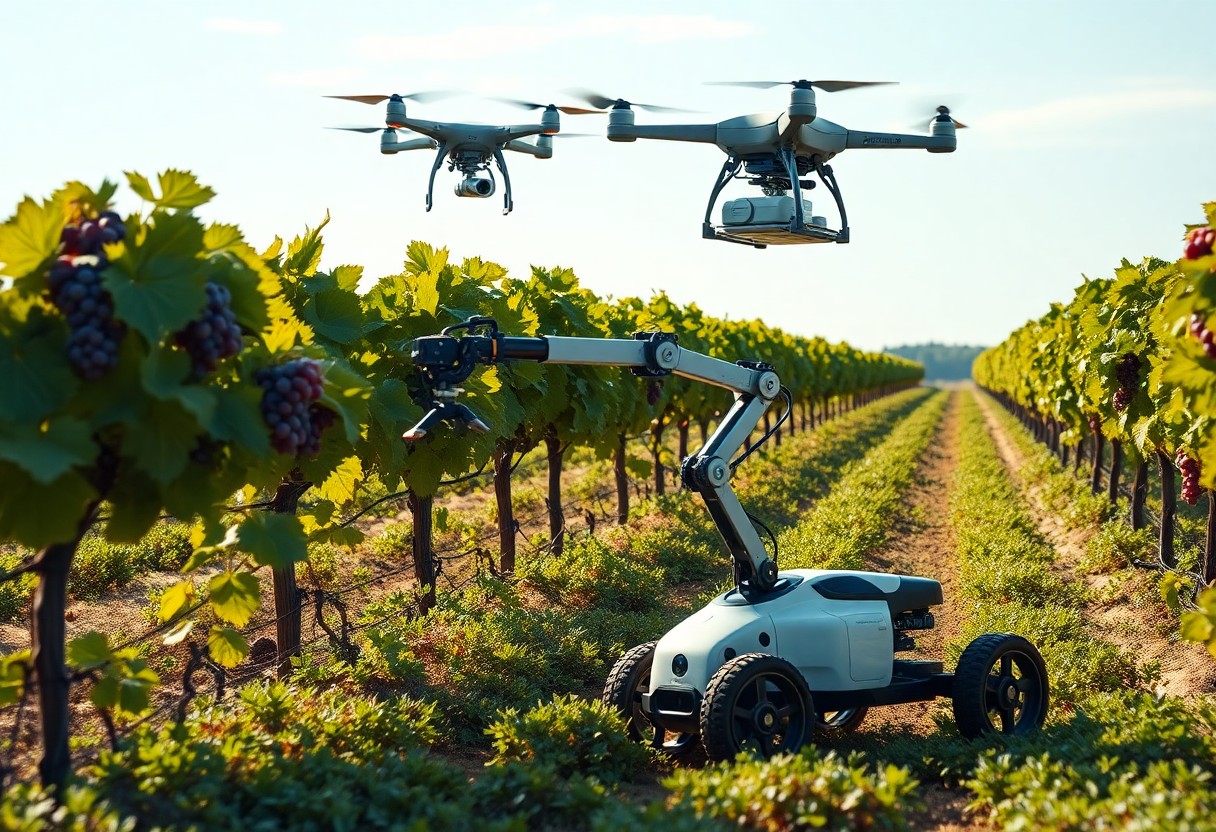Many advancements in technology are transforming robotics, and neuromorphic chips are at the forefront of this revolution. These chips emulate the neural structure and functioning of the human brain, allowing robots to process information more efficiently and adaptively. As you research into the world of robotic cognition, understanding the significance of neuromorphic chips will enhance your comprehension of how robots think, learn, and interact with their environments. This post will explore their function and impact, providing you with insights into the future of intelligent robotics.
Understanding Neuromorphic Chips
Before delving into how neuromorphic chips influence robotic cognition, it’s necessary to grasp what they are and how they function. By mimicking the neural structure and functioning of the human brain, these innovative chips facilitate advanced data processing and decision-making capabilities in machines. Their architecture enables them to process information in a parallel manner, effectively allowing your robot to interpret vast amounts of data more efficiently.
Definition and Functionality
After learning about neuromorphic chips, you’ll find that they consist of hardware designed to replicate the neural behaviors of the human brain. These chips utilize spiking neural networks to process information, allowing them to learn, adapt, and respond to stimuli in a dynamic way. This design makes them highly suitable for tasks requiring cognitive functions, like perception and decision-making in robotic applications.
Comparison to Traditional Computing
Understanding how neuromorphic chips stack up against traditional computing methods is necessary for recognizing their potential. Below is a comparison to highlight key differences.
| Neuromorphic Chips | Process data in parallel and mimic brain functions, resulting in low power consumption and real-time learning capabilities. |
| Traditional Computing | Utilizes sequential processing, often requiring more energy and time to complete complex tasks. |
Even as you explore robotic cognition, you’ll notice that the differences between neuromorphic chips and traditional computing extend beyond processing methods. Their ability to learn from experiences without explicit programming makes them advantageous in environments that demand adaptability. Traditional computing methods often fall short in tasks that require real-time responses to dynamic changes, illustrating why neuromorphic chips are paving the way for the next generation of intelligent robotics.
Robotic Cognition: An Overview
Some advancements in technology have paved the way for enhanced robotic cognition, allowing machines to perceive, reason, and act in response to their environment. This evolving field centers on mimicking human cognitive processes, empowering robots to make decisions autonomously. As you explore robotic cognition, you’ll discover the various components that contribute to machines becoming more intelligent and adaptable in their actions.
Definition and Importance
Before delving deeper, it’s necessary to understand what robotic cognition entails. It refers to the ability of robots to process information, learn from experiences, and apply reasoning to achieve specific goals. This capability is increasingly important as we rely on robotics in numerous applications, from healthcare to autonomous vehicles, enhancing their effectiveness and making them integral to modern society.
Key Components of Robotic Cognition
Cognition encompasses several key elements that work in harmony to enable intelligent behavior in robots. These include perception, learning, memory, and decision-making. Each of these components plays a vital role in how robots interpret data from their surroundings, adapt to new situations, and carry out tasks efficiently, enhancing your understanding of intelligent systems.
Overview of these components reveals that perception allows robots to gather information through sensors, while learning enables them to adapt based on past experiences. Memory serves as a repository for this knowledge, ensuring robots can recall relevant information when needed. Decision-making integrates all these elements, enabling robots to choose appropriate actions based on their assessments. Together, they form a sophisticated network, allowing for advanced robotic cognition that is necessary for the next generation of intelligent machines you may come across.
The Role of Neuromorphic Chips in Robotics
There’s an exciting transformation occurring in the world of robotics, fueled by the advent of neuromorphic chips. These chips mimic the neural architectures found in biological brains, allowing robots to process information in ways that are more akin to human cognition. By integrating neuromorphic chips, your robotic systems can enhance their sensory perception, decision-making processes, and overall intelligence, enabling them to interact with their environment in a more sophisticated manner.
Enhancing Learning and Adaptability
With neuromorphic chips, robotics can experience significant improvements in their learning abilities and adaptability. These chips enable machines to learn from their experiences in real-time, adjusting their behaviors based on the feedback they receive from their environments. This capacity for continuous learning means that your robotic systems can become increasingly effective as they encounter new situations.
Energy Efficiency and Performance
At the forefront of technological advancements, neuromorphic chips offer remarkable energy efficiency and performance benefits for robotics. By processing information in parallel and using event-driven architectures, these chips minimize power consumption while maximizing computational speed. This efficiency allows your robots to operate longer without exhausting energy resources, proving valuable in applications where extended autonomy is necessary.
Learning from experience is a core component of advanced robotics, and neuromorphic chips enhance this process by allowing for real-time adjustments in behavior with minimal energy usage. As your robots engage with their surroundings, the efficiency of neuromorphic processing translates to faster response times and a more nuanced understanding of complex tasks. This performance edge not only prolongs the operational life of robotic systems but also paves the way for innovations in autonomous applications that require extensive cognitive capabilities.
Case Studies: Neuromorphic Chips in Action
All around the globe, neuromorphic chips are being integrated into various robotic systems, showcasing their potential. Here are some notable case studies demonstrating their effectiveness:
- 1. IBM’s TrueNorth: Achieved 70 million neurons and 400 billion synapses, operating on just 70 milliwatts.
- 2. Intel’s Loihi: Developed for real-time learning and neuro-inspired algorithms, showing significant energy efficiency with a 1000x improvement in speed over traditional CPUs.
- 3. SpiNNaker: Simulates 1 million neurons in real time, enabling research in neural communication with a power consumption of only 25 watts.
- 4. Eyeris’ Edge AI: Utilizes neuromorphic chips for advanced visual perception in drones, enhancing object detection and scene understanding.
Real-World Applications
Behind these innovations lie practical applications that enhance robotic capabilities, from autonomous vehicles to drones. Neuromorphic chips allow robots to process sensory information faster and more efficiently, enabling tasks like obstacle avoidance and real-time decision-making in unpredictable environments.
Success Stories and Innovations
With the advancement of neuromorphic technologies, industry leaders have reported remarkable progress in robot cognition. Companies have harnessed these chips to create machines that mimic human-like decision processes, enhancing their operational flexibility and adaptability.
Indeed, you will find that the success stories surrounding neuromorphic chips are transformative. For instance, researchers at Stanford have developed a neuromorphic chip that replicates the human brain’s visual processing pathway, leading to faster image recognition in robots. Similarly, UC Berkeley’s work on adaptive motor control showcases how these chips facilitate learning through experience, allowing robots to fine-tune their movements based on environmental feedback. Such advancements present a new frontier in robotics, making systems not merely reactive, but truly intelligent and responsive, reshaping your expectations of robotic capabilities.
Challenges and Limitations
Now, while neuromorphic chips offer exciting possibilities for robotic cognition, there are several challenges and limitations that you must consider. These include technical hurdles, ethical considerations, and the need for standardization in design and application. Addressing these issues will be important to fully realize the potential of neuromorphic technology in robotics.
Technical Hurdles
Hurdles you may encounter with neuromorphic chips include their complexity and the current limitations in scaling. Developing algorithms that efficiently leverage these chips for real-time processing is still a significant challenge. Additionally, compatibility with existing systems can impede their integration into traditional robotic frameworks.
Ethical Considerations
Among the many issues surrounding neuromorphic technology, ethical considerations play a significant role. As you navigate this rapidly evolving field, you must weigh the implications of creating machines that mimic human-like cognition and behavior.
In addition to the moral questions around developing autonomous systems, you should also consider the potential impacts of bias in algorithms used in neuromorphic designs. Ensuring transparency in decision-making processes and accountability in failures is vital. The future of robotic cognition will inevitably intersect with social norms, necessitating a careful examination of how these technologies may influence society as a whole.
Future Directions in Neuromorphic Robotics
Many exciting advancements lie ahead in neuromorphic robotics. As research deepens, you can expect neuromorphic chips to play an increasingly significant role in creating more adaptable, intelligent robotic systems. This evolution will transform how robots perceive and interact with their environments, ultimately enhancing their cognitive capabilities and performance in real-world scenarios.
Emerging Technologies
Any new technological developments can reshape the landscape of neuromorphic robotics. Innovations in materials, algorithms, and chip design will likely enhance processing efficiency and enable more complex neural architectures. As you explore these advancements, you’ll find that they could lead to the design of robots capable of mimicking human thought processes and sensory responses more accurately.
Potential Developments and Trends
Around the horizon, we see various trends emerging in neuromorphic robotics, including more integrated systems and a focus on energy efficiency. You may find that as these trends develop, robots will become increasingly capable of learning from their experiences and adapting to new tasks, greatly improving their utility across different applications.
Understanding the potential developments and trends in this field involves recognizing how these advancements could redefine the capabilities of robotic systems. As neuromorphic technology progresses, you could witness robots that learn and evolve in real-time, enabling them to handle complex decision-making tasks. This shift may lead to broader applications in sectors such as healthcare, autonomous vehicles, and smart manufacturing, paving the way for a new era in human-robot collaboration.
Conclusion
On the whole, neuromorphic chips significantly enhance robotic cognition by mimicking the way your brain processes information. These chips enable robots to perform complex tasks more efficiently, adapt to their environments, and learn from experiences. By integrating neuromorphic technology into robotics, you can expect advancements in machine learning and decision-making capabilities, leading to smarter and more responsive robotic systems that better serve your needs and interact more naturally with you.






